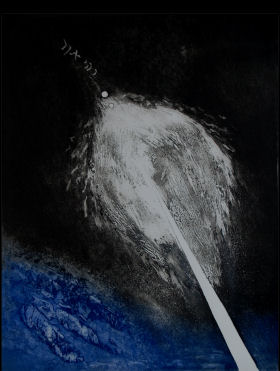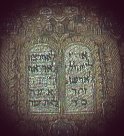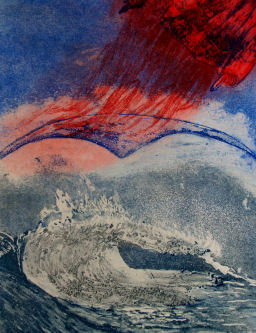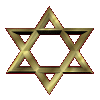Etchings of Marcus van Loopik
Days of creation |
 The
first day of creation The
first day of creation
In the beginning God created the heaven and the earth. Now the earth was
unformed and void, and darkness was upon the face of the deep; and the spirit of God
hovered over the face of the waters. And God said: Let there be light. And there was
light. And God saw the light, that it was good, and God divided the light from the
darkness. And God called the light Day, and the darkness He called Night. And there was
evening and there was morning, one day (Gen. 1:1-5). (Etching M. van Loopik)
|
Spiritual light
The light at the beginning of creation was no natural light, because God had not yet
created the sun, the moon and the stars.This light was the light of the Torah.The
light on the etching of the first day shows two forms,
spherical and long-drawn, withdrawing and penetrating. God also enters the world in two
ways. He is hidden and invisible, as during the silence and the retirement of prayer, but
on the other hand revealing Himself and becoming manifest as in the righteous actions of
mankind. The blue feathers at the bottom of the picture represent the words: And the spirit of God hovered over the face of the waters. According to an
old rabbinical tradition these words refer to the soul of the Messiah, which hovered over
the still undivided waters, in search for a resting place which could not be found in the
dark soup of primeval waters, and in search for a generation that will be worthy to offer
her a place to alight on. of the first day shows two forms,
spherical and long-drawn, withdrawing and penetrating. God also enters the world in two
ways. He is hidden and invisible, as during the silence and the retirement of prayer, but
on the other hand revealing Himself and becoming manifest as in the righteous actions of
mankind. The blue feathers at the bottom of the picture represent the words: And the spirit of God hovered over the face of the waters. According to an
old rabbinical tradition these words refer to the soul of the Messiah, which hovered over
the still undivided waters, in search for a resting place which could not be found in the
dark soup of primeval waters, and in search for a generation that will be worthy to offer
her a place to alight on.
|

The second day of creation
And God said: Let there be a firmament in the midst of the waters, and let it divide
the waters from the waters. And God made the firmament, and divided the waters which were
under the firmament from the waters which were above the firmament; and it was so. And God
called the firmament Heaven. And there was evening and there was morning, a second day
(Gen. 1:6-8). (Etching M. van Loopik)
|
This etching is inserted as illustration in the 'Lezenaarbijbel', publiced by
the 'Katholieke Bijbelstichting' ( Roman catholic Bible society ; 's - Hertogenbosch
1998), and provided with the following explanation.
|
Separation of only one finger breadth
On the etching of the second day you see how the waters that were above the firmament,
are divided from the waters that were under the firmament. The idea of the 'rakia' - the
firmament and roof of the earth - describes creation as a power forcing back chaos.
Likewise God pushed back the waters of the Red Sea to let his people escape from Pharaoh
and his warriors. At another time He divided the waters of the Jordan for Israel, in
order that His people could enter the promised land. According to an old tradition the
'rakia' measures only one finger breadth. Such a thin 'roof' makes us conscious of
the small distance, which separates us from chaos. We can bring back primeval chaos
like the generation of Noah, when water did not only came down from heaven but also
ascended from the earth swallowing all life. Man is king and steward of the earth. When he
neglects his responsibility, he will find nature opposite to him. In that case he makes
chaos to his master. 
In the top corner of the etching you see a flaming Torah scroll. The Torah is opening with
the simple words that enclose whole worlds: In the beginning God created
the heaven and the earth (Gen. 1:1). Almost every translation renders these words that
way. The Hebrew source text, however, permits another translation as well: By
means of the beginning God created the heaven and the earth. According to this
translation God made use of an instrument, i.e. the beginning. What kind of instrument was
the beginning? The midrash explains this by telling a parable. One can compare the Creator
with an architect. An architect does not start to construct a building at random but he
deliberately sets to work. He expresses his whole being and nature in the building.
Function and destination he lays down into a building scheme. The Torah was God's building
scheme with which He raised His World building. With the Torah He maintains it. The Torah
was created as the first of all God's creations. As a certain building reveals its maker,
so the Torah and the world reveal to us something of the essence of God, of His wisdom and
His being. The Torah also comprises the messianic destination of the world. It is given to
man, in order that he can make a shy beginning, which will lead him to messianic
fulfilment. But he cannot succeed without the help of God Who will finish the job for him.
|

|
 continuation
day 3-4 continuation
day 3-4

|